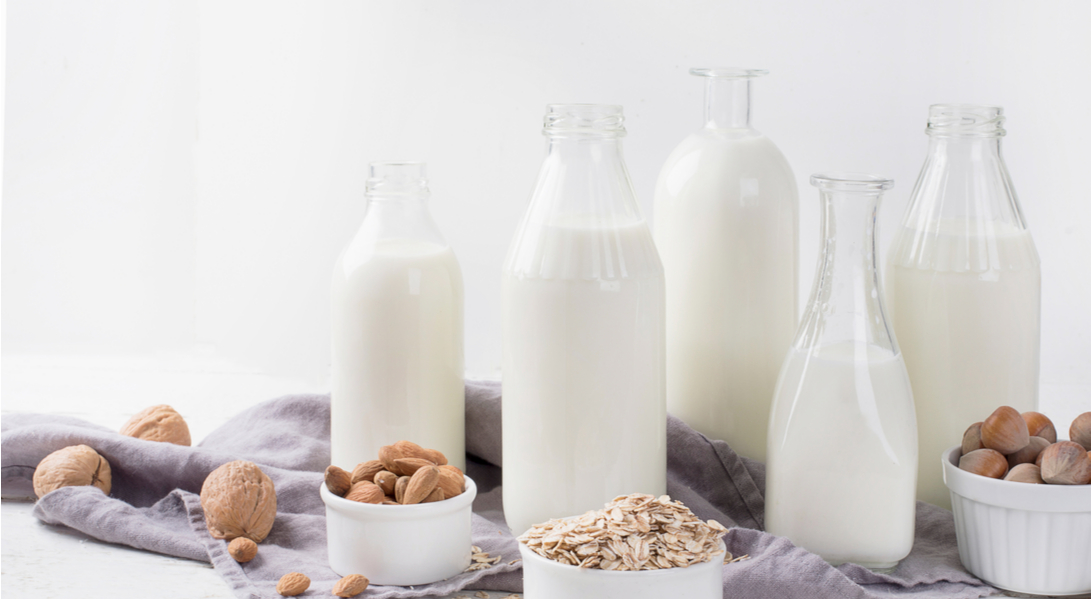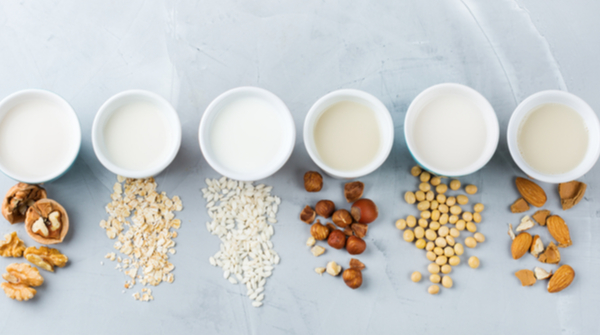It is often said that milk is not healthy for people with diabetes. However, did you know not all types of milk are harmful? Let’s find out the benefits of milk for people with diabetes.
Most of our childhood went by with parents trying to urge us to drink milk for energy. In fact, we never used to know the type of milk provided to us. However, as we grew up, we realised the different types of milk and understood their nutrition profile. Although milk or dairy products are still considered to be an essential part of a diet, it is also one of the controversial food types for people with diabetes.

Types of Milk

Before we get started, please understand that not all types of milk are suitable for people with diabetes. Therefore, it is essential to understand the different types and choose the one that best suits you. Here are the different kinds of milk available:
Regular or full-fat milk
Full-fat milk, also known as whole milk or full-cream milk, contains milk fat between 3.2% – 3.8%. It is pasteurised and homogenized and has a rich, creamy texture. Also known as full-cream or whole milk, it has a rich and creamy texture. It is closest to the most natural form of milk and contains all the nutrients, even after processing.
Low-fat milk
As the name suggests, low-fat milk has less fat. It has the same nutritional benefits with excess calcium content, except for the fat, which is less than 1.5% milk-fat on average.
Skim milk
In slim milk, all the milk fat is removed from the whole milk. It has not more than 0.15% milk fat and needs milk solids to improve the taste. Skim milk is often recommended as milk for people with diabetes.
Lactose-reduced or lactose-free milk
Found in most milk, lactose constitutes 2-8% of milk. However, in some instances, people are intolerant to lactose and therefore opt for lactose-reduced or lactose-free milk. It removes some or all of the lactose removed from the milk, thus being easier to digest for lactose intolerant people.
Buttermilk or cultured milk
Buttermilk is formed after souring the milk. It has a tangy flavour and is excellent for baking.
Flavoured milk
Flavoured milk is made by adding different flavours to whole, low-fat, or skim milk. Although they have a calcium content, they also are high in carbohydrate content due to the added sweeteners.
Powdered milk
Powdered milk is formed by evaporating pasteurised milk. The powder contains close to 40% milk solids dried to prevent particles from clumping and to reduce the moisture content. This is even available to people with diabetes in the form of diabetes-friendly milk powder.
Condensed milk
Condensed milk is made by removing all the water content from the whole milk. Mostly used in dessert dishes, it is thick and creamy in nature and can last for years if canned and unopened.

Composition of Milk
As per the National Dairy Council, milk contains nine essential nutrients that are beneficial to us:
- Calcium: Helps in developing strong bone structure; maintains bone mass.
- Protein: Repairs or builds muscle tissues; source of energy.
- Vitamin D: Essential for healthy bones.
- Potassium: Maintains blood pressure.
- Vitamin B12: Develops healthy red blood cells and nerve tissue.
- Vitamin A: Necessary for a strong immune system, good eyesight, and skin.
- Riboflavin(B2): Helps to convert food into energy.
- Niacin: Metabolizes fatty acids and sugars.
This is why milk is considered a nutrient punch to the body. In fact, a glass of milk can provide the same amount of Vitamin D as 100 gms of fish, the same amount of calcium as 2 1/4 broccoli, as much potassium as one banana, and as much Vitamin A as two baby carrots.

What are the Benefits of Milk for People With Diabetes?
Several studies have shown a relationship between milk and diabetes. In fact, certain studies have stated adding milk to the diet can reduce the risk of diabetes. However, the studies also stated the results could also factor in lifestyle changes too. Moreover, the fat present in milk is saturated fat, which is proven to have helped in Type-2 diabetes.
Shivangi Gupta, Diabetes Educator at BeatO shares, “Toned/double toned milk can be added to the diet of people with diabetes. Also, milk products like toned curd, and double-toned paneer has lesser calories in comparison to milk. Non-diary products like soy milk/almond milk/coconut milk can be used as they’ve fewer calories.”
One point to be noted is that selecting the type of milk is essential, especially in the case of diabetes. This mainly depends on your daily diet, daily carbohydrate intake, and the flavours you prefer.
Read More: Benefits of Makhana for Diabetes Patients




